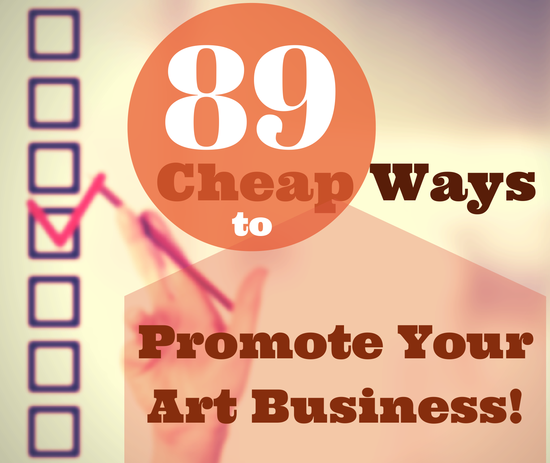11 Great Ideas to Cure Writer’s Block
Here is a guest post from Alyson Stanfield.
Discover easy ways to create content your prospects want to know from my friend, and every artist’s friend, Alyson Stanfield, the Art Biz Coach. Check out her powerhouse Art Biz Makeover workshop in November by CLICKING HERE. I will be back next week with new art marketing ideas, and more. — Barney
Learn to get over your writer’s block with these practical content creation ideas.
When you try to sell your art in the virtual space, you are no longer just an artist. You are also a content creator.
This realization is daunting to many artists, which you’ll discover by paying attention. Newsletters are started with a bang and gradually disappear, blogs are neglected or even abandoned altogether, and social media is just…well, just a conundrum.
What do you share when the online world is already full of noise?
Here’s what you do: Remember that people are expecting to hear from you. They friended you, liked you, signed up for your newsletter or blog, or followed you because they want to hear your point of view. Live up to those expectations.
Still, I know that there are times when it’s difficult to come up with subject matter.
When the well has run dry and you have no idea what to write about, return to this list for some quick prompts.
Contextualizing Your Art
Your goal is always to keep the focus on your work when creating content, so don’t stray too far.
1. Discuss your art technique or medium.
Not all art techniques and media are interesting, so how could you make yours more interesting? Unless your audience is filled with experts, you should write as if no one has ever heard of what you do.
2. Expand on your subjects.
If your subject is the landscape, write about the history of the place, the people who have lived there, the native wildlife, or any related controversies.
Feature anything related to your niche market. I often ask my clients and students to mind map their niche market, which increases their content potential exponentially.
If you make garden sculpture, write about fictional gardens and historical gardens. Give garden tips and share other items that might be found in a garden alongside your sculpture.
3. Review an art exhibition.
Visit a new exhibition of art and write about what it has in common with your own. It’s a valuable exercise to place your art in the context of other art, and it’s a service to art viewers.
While you’re at it…write a rebuttal to an art review in the newspaper or on a blog.
Voicing strong or contrary opinions can be scary, but they are what people remember. We don’t usually stick around for limp blogs or wimpy articles.
4. Explore the history of a color, art medium, subject matter, or technique.
This will help you stand out because very few artists take the time to research these aspects of their art. It can only benefit you to know the tradition of what you do.
Margret Short does this very well on her blog, which has had an emphasis on exploring pigments. See this post about iron oxide.
5. Tout a recent award or honor you received.
If you don’t tout your accomplishments, who will? But don’t just say, “I won this award!” Talk about why the recognition is important. What does it mean to you? If you can’t do this, it’s probably not worth mentioning.
I love how Lisa Call did this.
Don’t forget to announce new gallery representation. Again, don’t just announce it. Say why this gallery is a good fit for you, why you respect it, and mention the achievements of the other artists in the stable.
Throw in recent purchases and commissions for more social proof.
Connecting with Community
6. Confront themes around art education.
Write about your favorite art teacher and why he or she meant so much to your creative development. What did you learn from her? Conversely, you might write about where your education was lacking and how art teachers could improve the curriculum.
If you dare get into politics, and I think you should, argue on behalf of more art in the school curriculum.
7. Reveal why you donated artwork to a charity auction or nonprofit.
It’s presumed that you support any nonprofit that you donate your art to. Why? What are they doing that you believe in? How can your readers help support the cause?
Include your donated piece and how it can be purchased.
8. Take a stand on public funding of the arts.
If your state or city has debated a public arts program, it’s likely that there was some controversy in the beginning. Present the facts and take a stand. Research public arts programs in other communities and any controversy around them or any positive impact they’ve had on their communities.
Alternatively, explore the public art in your area and write about what does and doesn’t work for you. Don’t cheat! You can’t write art reviews from digital images online. You must visit the work in person.
9. Interview a local curator or collector.
A great way to meet people is to reach out to the people in your art community for a feature on your blog or in your newsletter. Read how E. Brady Robinson started photographing desks of arts leaders in Washington, D.C.
Repurposing Social Media Updates
10. Compile the top resources or quotes you tweeted or found on Twitter.
The downside to tweeting and retweeting is that those updates usually disappear into the ethers immediately after you’ve shared them. Curate a list of your best tweets to share with your fans.
11. Recount funny or insightful comments from your Facebook business page.
The chances are good that you’re the only person who reads all of the comments on your business page, and that there are probably some gems there that you could turn into a post or article.
There are so many more topics that could be fodder for your writing and social media updates. I suggest brainstorming a list, starting with these 11 ideas, and continually updating it. With this consistent habit, you’ll find that you have more to share than you have time for.
Alyson B. Stanfield is an art business coach and the author of I’d Rather Be in the Studio: The Artist’s Guide to Self-Promotion. She is hosting Art Biz Makeover, a 2.5-day live event in Colorado November 5-7, where you can network and pick up other tips for expanding your photography business. See https://artbizmakeover.com for details
The post 11 Great Ideas to Cure Writer’s Block appeared first on Art Print Issues. Alyson Stanfield is the publisher and author of this post with the exception of very infrequent, and always properly attributed contributing authors.
SOURCE: Art Print Issues - Read entire story here.






